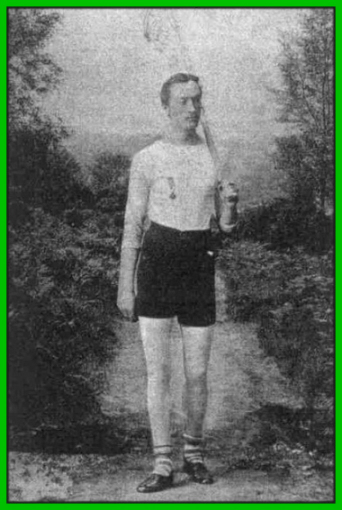

John was born in Montreal, Ontario, Canada in 1850 and was a top player for the Montreal Shamrocks Lacrosse Club as a teenager. In addition to being a gifted athlete, he was a talented teacher, organiser, promoter and coach.
John took a job with the Standard Oil Company and moved to Boston, MA, in the late 1870s. In 1877, he helped start the Union LC, and on 4th July 1878 he organised a game billed as the National Championship between Union LC and Ravenswood LC of New York City. Encouraged by the turnout of some 40,000 spectators, other clubs quickly sprang up in New York and Baltimore, MD.
In 1879, John moved to Brooklyn, NY. He played at first for Ravenswood LC, then later for the New York LC, the Williamsburg Athletic Club, Brooklyn LC, and the New York AC. He felt it was important to teach the skills of the sport to the uninitiated, a philosophy that was vital in those days when most skilled players and coaches still lived in Canada. That same year, John founded the United States National Amateur Lacrosse Association to encourage the growth of the sport. The Association began with nine teams from New York City, upstate New York, Boston, and Pennsylvania, and later added teams from the South and Midwest. John served as its secretary-treasurer until 1886.
In 1881, the first ever intercollegiate lacrosse tournament was held, with Harvard defeating Princeton in the final. In 1885, John founded and became the first president of the Metropolitan New York Lacrosse Association and also became the coach of the first official team at the Stevens Institute of Technology in Hoboken, NJ. John figured prominently in the development of the John Hopkins University team as well.
John was one of the top club players in the USA during the latter part of the 19th century. He played on the Williamsburg team from Brooklyn, NY, in 1885, and in 1886 he played on a team that defeated a team from Belfast, Ireland. In 1888, he was captain of the Brooklyn team that won the championship, and he scored the winning goal in the championship game. In 1891, he merged his team with the New York Athletic Club. He retired as a player after 27 years.
In 1898, John manufactured the “The Flannery Celebrated Lacrosse Sticks”, and he made a special order for Johns Hopkins University. He was also instrumental in getting the U.S. Army to pick up lacrosse. In 1911, he referred to lacrosse as “the king of field games”.
In 1897, one of John Flannery’s major accomplishments was the donation a silver cup, the Flannery International Cup, which was given to the team that scored the most points in a series of international games played in England between teams from the USA, the United Kingdom, and Canada. These international games were played off and on from the latter part of the 19th century until the 1930’s, and the Flannery Cup was awarded in all of these games. The silver trophy is currently housed in the Lacrosse Museum and National Hall of Fame in Baltimore, MD.
“Lacrosse is one of the most scientific and soul-stirring exhibitions of manly grace, endurance, and strength that the modern athlete is capable of displaying. There is no game in which individual skill shows to better advantage” - John R. Flannery: the Father of American Lacrosse.
John married Mary Irene Pomeroy, and had five children, Robert, Howard, Wyman, Teresa and Elizabeth.
John died in Brooklyn, NY, on 12th February 1919, and he is buried in Holy Cross Cemetery, Flatbush, NY.
[his portrait is illustrated above; courtesy of "Lacrosse Magazine" (March 1991, p.60) by permission of Lacrosse Museum and National Hall of Fame; with special thanks to Joe Finn, Archivist]